Amazon made a decision sometime in the last two months or so to cut off new indie books to the five plus two categories allowed to all indie/self-published authors who had both paperback and Kindle formats on Amazon. Why could this decision have been made, and how can authors make the most of the measly two categories now allowed when publishing on Kindle?
Spoiling It For The Rest Of Us
What happened? Maybe the mounting problems for authors who had trad-published, or had genre books in the last couple of years with categories forced a change. Publishing companies and indie authors on imprints and small presses with money riding on book campaigns were being drowned in self-publishers categorizing their books too loosely in ways to get seen – especially in the erotica genre. I talked about this as being a problem I foresaw Amazon reacting to, and was only two pitchforks from being burned at the stake for mentioning anything that could cause a vibration through the “freedom for writers everywhere” faction.
But hey, it happened as predicted, and very quietly, too.
While some authors were releasing up to eight books of erotica at the same time to flood book charts with their ‘brand,’ and categorized them as “Westerns” when their lover boy rode a horse, or “Crime Fiction” when the book featured a gangster type doing the bedding, Amazon was flooded with books that used to stay in their own little (adult) area – it became nigh impossible to even enter the YA Sci-Fi section of Amazon without a bevvy of bare chests and chiffoned thighs gracing the listing pages.
So the greedy few seemed to have spoiled it for the rest of us. Well done, kids!
Finding “The Two”
So that left me with a dilemma when helping authors find categories for their books on our marketing campaigns with our Bestseller Package at SPR.
One one hand, *huzzah*, I didn’t have to fight through the ‘sexy singles’ (blaurgh) and ‘Mommy Porn’ (Ugh, what an oxymoron that phrase is) to find a nice category for my genre client to fit into where they’d be drowned out.
Demographics
I can now be certain we’ll have a breeze when it comes to finding audiences by looking at like-minded books and looking at sales, which, when I had so much erotica to paw through, was impossible. Any woman buying the ‘Sci Fi’ book “Space Casanovas III” was not going to be the demographic for, say, “Doom Wars – The Schmitar Era.” I can’t be sure previously that drooling housewives who read the ‘Western’ “Bull Rider – A Cowgirl’s Sexy Education” were going to go for “Jesse James Country – Includes Maps and Geology Results”.
Now I’m faced with the more normal task of balancing off Philip Pullman and JK Rowling against nice and easy sci-fi/fantasy books – as it should be.
If I do have an erotica client, it’s now going to be straightforward – I have a base category to begin with, and the readers now filter right into the lane I want them to be in.
But – Oh, hang on. That means on the other hand – more fish in less streams. That means we are a small fish in a very much bigger pond when reaching out. Doesn’t it?
Well, not necessarily.
Applying SEO Techniques
I was reminded of my time in SEO (Search Engine Optimization) management. By writing words in the right ways on websites, Google shows stuff higher on results pages when people search for the terms used – terms that by psychomagic and lots of demographic research, SEO managers match to the exact terms people naturally type into Google. The winning phrases can land you as the first result on Google, meaning you are far more likely to be clicked on and get a visitor to your site before anyone else listed.
We used a technique called “long-tailing” for key phrases (words on a website for products). What is this? This from Forbes’s Joshua Steimle’s article on LongTail SEO:
First popularized by Chris Anderson in a Wired article and then a subsequent book, the concept of the long tail, applied to SEO and keyword strategy, is that a small number of keywords are searched for a lot, and a lot of keywords are searched for a little. The keywords that are searched for a lot (high volume) are the body, and the keywords that are search for a little (low volume) are the long tail. When you add up the the total number of searches in the long tail, it can be larger than the searches in the body. This graphic illustrates this idea.
Knocking Out Less Relevant Results
Let’s take my editing company, Indie Book Editing. Searching for “editing” on Google gets you 283,000,000 results, and these start with Wikipedia’s definition of editing as the number one result:
My site is not there on the first pages.
But if I type “indie book editing” into Google, I get 1,630,000 results, a much smaller number, and my website is on the first page of Google:
In other words, there’s a tree, and if “editing” is the trunk, then “indie book editing” is a small branch that only more intrepid and determined squirrels will climb along. As an author, you need intrepid squirrels to buy your book!
Long-tailing to Increase Chances of a Sale
If we “long-tail” that even further, we increase the chances of finding more people who want exactly what we offer, and therefore result in a more definite chance for a sale.
For instance, I want red patent leather shoes with flowers on.
I search for “red shoes.”
Well I get 230,000,000 results. That means as a customer, I would have to search through 230,000,000 items to find my perfect shoes. As a shoe retailer, they are pretty shoddy odds to make a sale.
So if I “longtail” that:
I get 3,280,000 results this time, a much smaller number, but in the first row of images, the fifth image is exactly what I want!
So what am I saying?
If you narrow your search on Google by adding more description, you have a greater chance of finding exactly what you are looking for. That also means if you are selling a product and you want people to find you, by going niche you may have less people finding you online, but the people that do will be far more likely to buy your product. This makes your phrases easier to rank in Google for, and are less competitive. If someone types more words from your description in Google you are more likely to be seen faster.
How does this apply to Amazon?
Simply, Amazon is another type of search engine. Amazon uses an inventory-style search engine, and so uses BISAC subject codes to fit in with bookshops and libraries for paperbacks, and then often converts these for Kindle books into “like-for-like” categories. It’s actually easier than Google, which requires you to assess natural slang and how people talk, online language, etc. This is much more simple, because it’s an inventory list. Words are set in stone. You just have to decide which ones suit you best from a rather narrow list.
Avoiding Big Launch Days and Holidays on Amazon
It’s worth mentioning that unlike Google, which has something of a ubiquitous nature when it comes to clients, Amazon controls and changes what is shown in its shop, as a private business, and sometimes you won’t be able to control how the charts and visibility goes.
That’s fine; Amazon have no responsibility as a profit-maker to do what’s best for all books, and say so when you sign up to publish, in their Ts+Cs. You can have some control here by tracking when huge books are coming out, and avoiding launching during big holidays with themes that have nothing to do with your book, i.e. Valentine’s Day or Hallowe’en, with this advanced book search tool from Amazon, here set to search for all Kindle books set to launch in June 2015:
The results for June 2015 then list on Amazon with launch dates for you to browse – when choosing a launch date, try to steer clear of big authors and special editions of any kind.
Unlocking Other Places To Get Seen on Amazon
Let’s pretend you are the author of “Doom Wars – The Schmitar Era”, a space opera that borrows from Star Wars for epic battles in space.
If you think of these categories going from “short tail” or broad, such as:
Kindle Store > Kindle eBooks > Science Fiction & Fantasy
to “long tail” such as:
Kindle Store > Kindle eBooks > Science Fiction & Fantasy > Science Fiction > Galactic Empire
you can get yourself seen on Top 100 boards on Amazon Kindle Bestsellers, and get included on “Related To Items Viewed” and “More Items To Consider” boxes on a customer’s logged-in homepage, based on their previous purchase and view history:
Choosing Niche
When you choose a category, you are taking a guess on how a reader will find your book. If you have only entered a shorter, broader category such as “Science Fiction” you are going to be in a pot with every single Sci-Fi book on Amazon from Philip K Dick to HG Wells to Arthur C Clarke. Do you reckon you’ll outsell them to be in the Top 100? Hmm.
So how’s about “Galactic Empire”? How many books are looking to be in that category? A lot less. You will in essence have to sell far less books to be seen in the Top 100 of that category because there are simply less books matching that description.
Now you may be flailing, wanting to cast your net wide so you get every chance to be seen. Well, imagine a pile of books a thousand deep by a thousand wide, and you have around 3 seconds to appear in front of your reader, whose eyes you have no control over, to pick your book on a whim. What are the odds of making a sale? One in thirty thousand? Something like that.
Basically, it’s about being found, not about being seen.
Let’s try that with a long-tail category. Let’s imagine there are around eight hundred readers today who have a longing for something Star Wars-y, something epic and galactic. They may start at “Science Fiction and Fantasy”, but they will click down to “Galactic Empire” pretty fast – only two clicks in, in fact. If only fifty of those readers buy your book today, you’d be number one in “Galactic Empire”.
Unlocking Amazon Promotional Freebies
Why should I care about being the best of a tiny portion of Amazon?
Because once you are a Bestseller, you will get all the perks of Amazon’s Hot New Release, Most Wished For, and many more nice list-y type places Amazon curates that will give you free advertising to thousands of other more generic sci-fi fans who never clicked down into the niche categories.
Climbing Is Possible
Also, you will climb up your “branches.” Once you outsell the next level up, you will start showing for just:
Kindle Store > Kindle eBooks > Science Fiction & Fantasy
Of course, the goal is to reach:
Kindle Store > Kindle eBooks > Fiction
By being canny and picking the less-competitive but more fitting categories for your book you can overcome the difficulty imposed by being an indie author, and use categories to your advantage.
Get an Editorial Review | Get Amazon Sales & Reviews | Get Edited | Publish Your Book | Enter the SPR Book Awards | Other Marketing Services


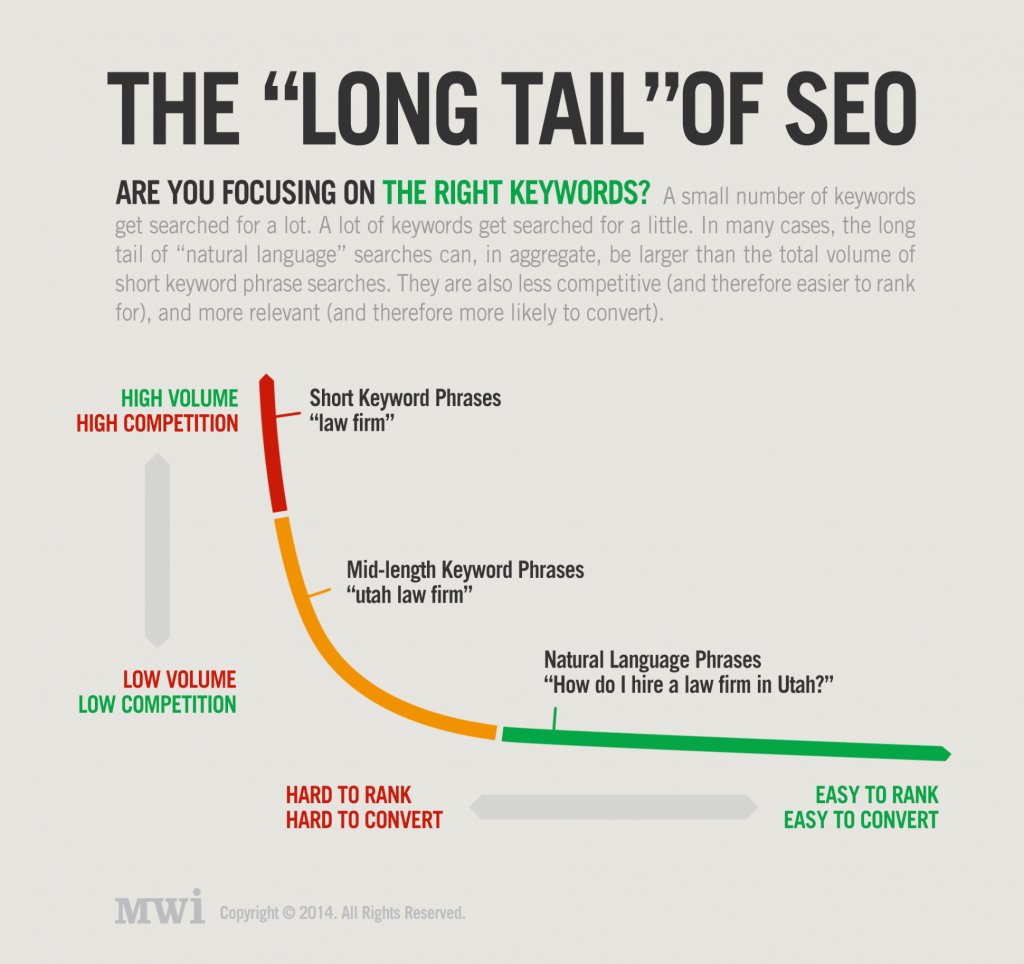





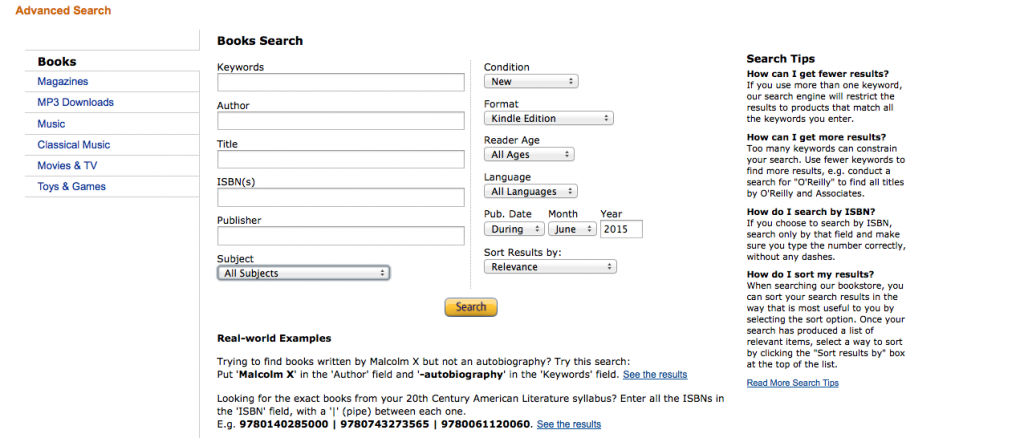
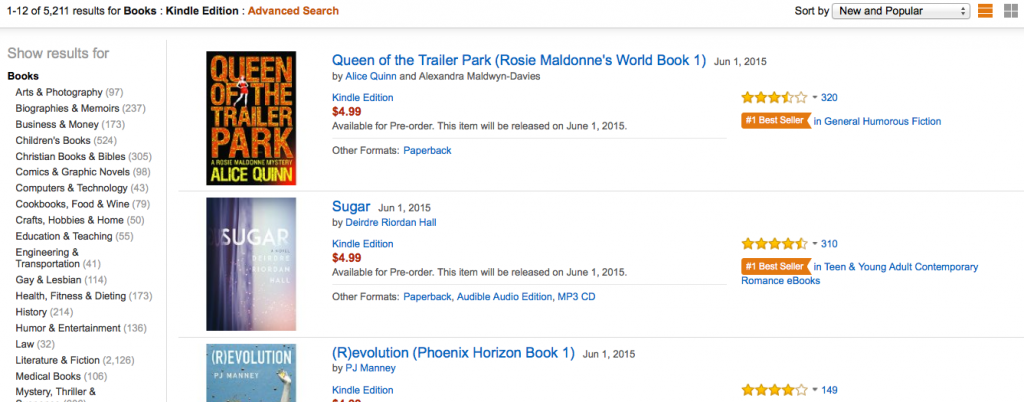
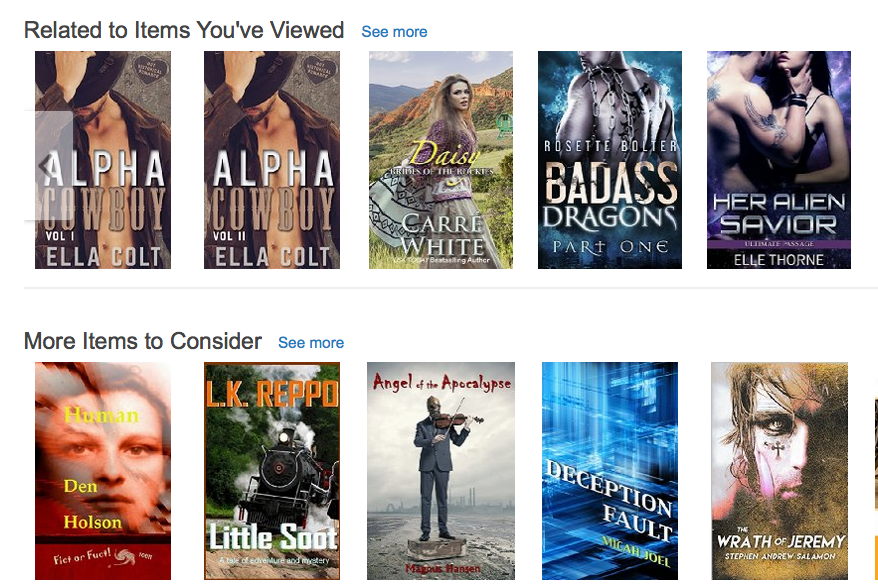
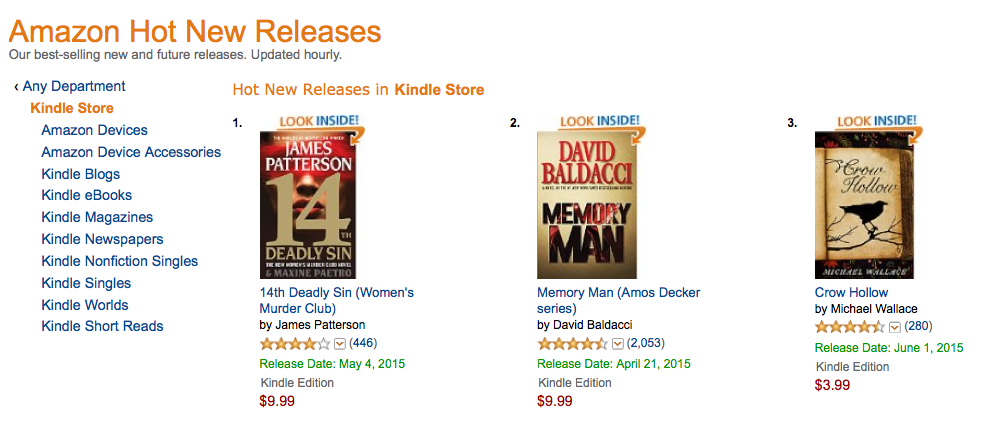




















Leave A Comment